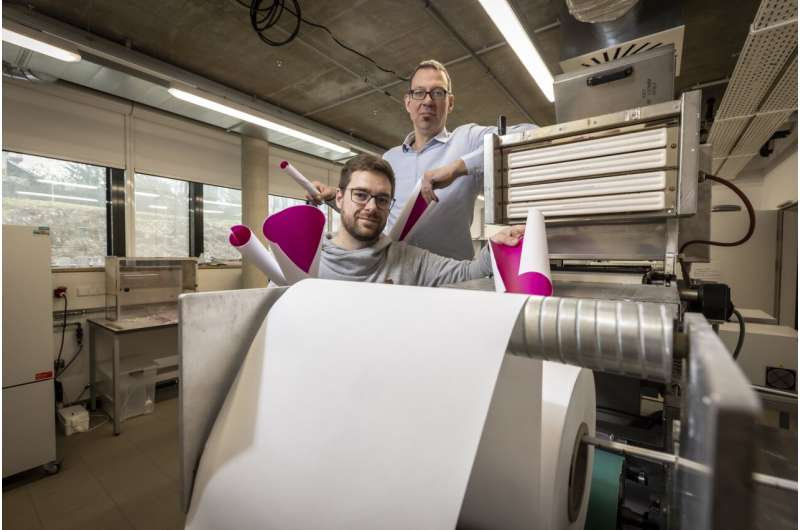This article has been reviewed according to Science X's editorial process and policies. Editors have highlighted the following attributes while ensuring the content's credibility:
fact-checked
trusted source
proofread
Mystery of curling paper solved

Although mankind has been using paper for at least 2,000 years, it still presents us with one or two mysteries. For example, it was previously unknown why paper printed on one side using inkjet printing starts to curl up after a few hours to days, even if it was flat after printing and drying.
Alexander Maaß and Ulrich Hirn from the Institute of Bioproducts and Paper Technology at Graz University of Technology (TU Graz) have now discovered the reason. The cause lies in solvents contained in the ink, which migrate over time through the paper toward the unprinted side. This causes the cellulose fibers on the unprinted side to swell and the paper starts to curl. The research is published in the journal Materials & Design.
Degree of paper curl measured with laser scanner
For their experiments, the researchers sprayed standard A4 printer paper on one side with a model ink consisting of water and the solvent glycerol. They then observed the curvature of the sheets of paper for a week using a laser scanner.
While paper sprayed with water did not curl any further after 24 hours, the process continued for a week with paper sprayed with the water-glycerol mixture. The reason for this is that the glycerol, which unlike water only evaporates at very high temperatures, slowly but steadily migrated from the sprayed side of the paper to the other side.
Paper separated into thin layers
The researchers were able to demonstrate this process by splitting the paper samples into thin layers and determining their respective glycerol content. They found that the glycerol continuously decreased in the upper, sprayed layers and increased in the lower ones.
Since glycerol, like water, causes cellulose fibers to swell, the volume of the different paper layers changed during the test period. The layers close to the sprayed side shrank, while the deeper layers swelled up. The visible result was that the paper curled, and did so continuously for a week.
"To solve the problem, glycerol could be replaced by other solvents. However, this is not so easy because glycerol gives the inkjet ink important properties that make it suitable for inkjet printing in the first place," says Ulrich Hirn. Alternatively, the reverse side of the paper could also be printed or treated with an appropriate amount of glycerol.
More information: Alexander Maass et al, Long term curl of printing paper due to ink solvent migration, Materials & Design (2023). DOI: 10.1016/j.matdes.2023.112593
Provided by Graz University of Technology





















